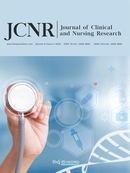Abstract
Objective: To investigate on post-traumatic stress disorder (PTSD) and its influencing factors in patients with spinal cord injury. Methods: From January 2019 to December 2021, 168 patients with spinal cord injury in The First Affiliated Hospital of Xi’an Medical University were selected as the research subjects. Among the patients, 77 were female patients, with an average age of 56.39 ± 13.98, and 91 were male patients, with an average age of 58.12 ± 14.01. Clinical data were collected, and the factors influencing PTSD in patients with spinal cord injury were analyzed and observed. Results: The patients were divided into two groups according to diagnosis (98 cases with PTSD, and 70 cases with non-PTSD). Among them, there were 62 male and 36 female patients in the PTSD group, and 29 male and 41 female patients in the non-PTSD group; in the PTSD group, 62 patients were ? 50 years old, while 36 patients were < 50 years old, whereas in the non-PTSD group, 31 patients were ? 50 years old, while 39 patients were < 50 years old; 46 and 52 patients in the PTSD group and 33 and 37 patients in the non-PTSD group were single and married, respectively; in the PTSD group, the number of patients that fall under each demographic factor can be summarized as follows: education level (29 junior high school and below, 12 high school/secondary school, 57 college and above), religious belief (69 none, 29 yes), personality (31 introverted, 24 ambiverted, 43 extroverted), complications (52 yes, 46 no), type of injury (34 complete, 64 incomplete), post-traumatic coma (25 yes, 73 no), degree of pain (51 mild, 14 moderate, 33 severe), resilience (36 low, 62 high), and social support (12 low, 39 moderate, 47 high); in the non-PTSD group, the number of patients that fall under each demographic factor can be summarized as follows: education level (7 junior high school and below, 37 high school/secondary school, 26 college and above), religious beliefs (53 none, 17 yes), personality (18 introverted, 47 ambiverted, 5 extroverted), complications (32 yes, 38 no), type of injury (45 complete, 25 incomplete), post-traumatic coma (49 yes, 21 no), degree of pain (31 mild, 38 moderate, 1 severe), resilience (55 low, 13 high), and social support (51 low, 13 moderate, 6 high); there was statistical difference between the two groups in terms of gender, age, education level, personality, injury type, post-traumatic coma, degree of pain, resilience, and social support (p < 0.05). Conclusion: PTSD in patients with spinal cord injury is positively correlated with gender, education level, degree of pain, psychological resilience, and social support. Clinically, more emphasis should be on its influencing factors, and early intervention should be reinforced to reduce the risk of PTSD.
References
Huang L, Ye C, 2022, Application of Supportive Psychological Nursing in the Prevention of Post-Traumatic Stress Disorder in Patients with Spinal Cord Injury. Chinese and Foreign Medical Research, 20(07): 112–115.
Xie F, 2021, The Effect of Staged Psychological Nursing on the Resilience and Post-Traumatic Growth of Patients with Spinal Fracture and Spinal Cord Injury. International Journal of Nursing, 40(24): 4478–4482.
Zhu Z, Wang X, Zuo X, et al., 2021, Photobiomodulation Promotes Spinal Cord Injury Repair by Inhibiting Oxidative Stress and Secondary Inflammation. Medical Contention, 2021: 1–14.
Wang X, Huan Y, He Y, 2021, Research Progress of Neuronal Apoptosis After Spinal Cord Injury. Inner Mongolia Medical Journal, 53(08): 945–947.
Zhu Q, Hu G, Li Q, et al., 2021, Application of Mouse Nerve Growth Factor, Mild Hypothermia Combined with Methylprednisolone in Acute Spinal Cord Injury and Its Effect on Oxidative Stress Level. China Journal of Modern Medicine, 31(23): 79–83.
Cui J, Liu M, 2021, Research Progress on the Protective Effect of Acetyl-L-Carnitine on Mitochondria After Spinal Cord Injury. Shaanxi Medical Journal, 50(03): 374–376.
Zhao Z, Zhao Z, Feng F, et al., 2020, Research Progress on the Protective and Repairing Effects of Valproic Acid in Acute Central Nervous System Injury. International Journal of Neurology and Neurosurgery, 47(04): 459–462.
Yu F, Wang J, Xiong Y, et al., 2020, Clinical Observation of Electroacupuncture Based on Jiaji and Du Meridian Combined with Hyperbaric Oxygen Therapy on Acute Spinal Cord Injury. Shizhen Chinese Medicine and Chinese Medicine, 31(04): 1022–1024.
Cheng J, Li H, Li X, 2019, Intervention of Pepper Leaf Extract Can Reduce Oxidative Stress and Inflammatory Response in Rats with Acute Spinal Cord Injury. Chinese Tissue Engineering Research, 23(31): 5010–5016.
Tang T, Sun P, Yao B, et al., 2019, Effects of Edaravone on Serum-Related Indexes in Rats with Acute Spinal Cord Injury. Trauma and Critical Care Medicine, 7(03): 164– 166.
Dou H, 2018, Study on the Mechanism of American Ginsenosides Regulating Endoplasmic Reticulum Stress and Inflammatory Pathways to Promote the Repair of Spinal Cord Injury in Rats. Soochow University.
Wang W, Huang X, Fan C, 2018, Therapeutic Effect and Dose Effect of Methane-Rich Saline on Acute Spinal Cord Injury in Rats. Chinese Journal of Bone and Joint Injury, 33(09): 937–939.
Zhao L, Zhou S, Zhang X, et al., 2018, Effects of bFGF on the Expression of Endoplasmic Reticulum Stress Protein CHOP in Spinal Cord Tissue of Rats with Acute Spinal Cord Injury. Journal of Shanxi Medical University, 49(09): 1037–1040.
Wang W, 2018, Methane and Hypoxic Preconditioning of BMSCs in the Treatment of Acute Spinal Cord Injury in Rats and Related Mechanisms. Chinese People’s Liberation Army Naval Medical University.
Zhu Z, Li J, Sun Q, et al., 2018, Effects of Polygoniside on Oxidative Stress and Inflammation in Rats with Acute Spinal Cord Injury. Journal of Clinical Military Medicine, 46(04): 435–438.
Qi Y, Tan M, Wang Y, et al., 2018, Study on the Effect of Buyang Huanwu Decoction on Endoplasmic Reticulum Stress-Related Factors in Rats with Acute Spinal Cord Injury. China Journal of Traditional Chinese Medicine Orthopedics, 26(02): 8–12.
